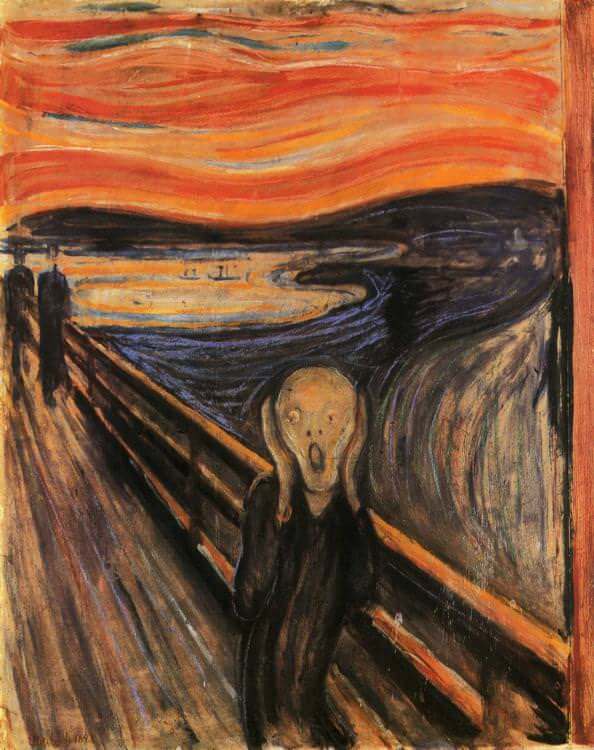
Munch's The Scream is an icon of modern art, the Mona Lisa for our time. As Leonardo da Vinci evoked a Renaissance ideal of serenity and self-control, Munch defined how we see our own age - wracked with anxiety and uncertainty.
Essentially, The Scream is autobiographical, an expressionistic construction based on Munch's actual experience of a scream piercing through nature while on a walk, after his two companions, seen in the background, had left him. Fitting the fact that the sound must have been heard at a time when his mind was in an abnormal state, Munch renders it in a style which if pushed to extremes can destroy human integrity. As previously noted, the flowing curves of art nouveau represent a subjective linear fusion imposed upon nature, whereby the multiplicity of particulars is unified into a totality of organic suggestion with feminine overtones. But man is part of nature, and absorption into such a totality liquidates the individual. Beginning at this time Munch included art nouveau elements in many pictures but usually only in a limited or modified way.
Here, however, in depicting his own morbid experience, he has let go, and allowed the foreground figure to become distorted by the subjectivized flow of nature; the scream could be interpreted as expressing the agony of the obliteration of human personality by this unifying force. Significantly, although it was Munch himself who underwent the experience depicted, the protagonist bears no resemblance to him or anyone else. The creature in the foreground has been depersonalized and crushed into sexlessness or, if anything, stamped with a trace of the femininity of the world that has come close to assimilating it.
Evening on Karl Johan Street
The Dance of Life
Love and Pain
White Night
The Sun
Anxiety
Girls on the Bridge